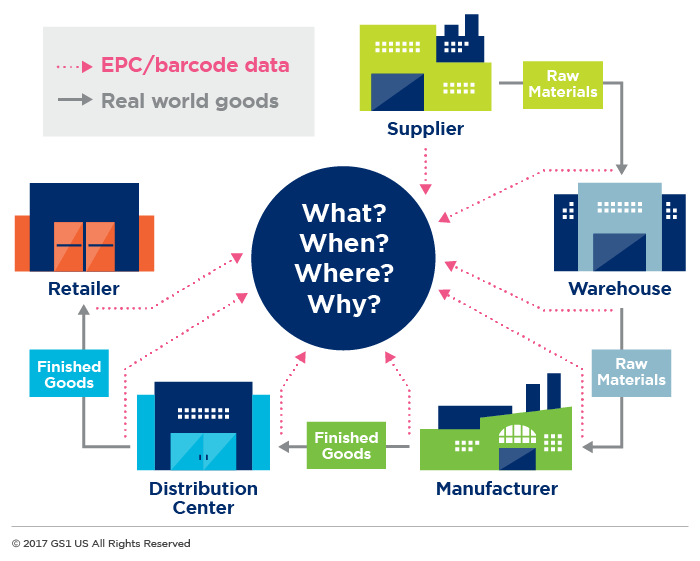GS1 standards for sharing master data, transaction data, and event data, as well as communication standards which support interoperability across applications and trading partners.
GS1 standards that power organisations to share information
Sharing standardised data electronically with business partners has many benefits, including reducing communication errors, increasing the speed of business transactions, and supporting real-time product information updates.
EDI (Electronic Data Interchange)
Electronic business messaging in standardised format that enable speed, efficiency and accuracy for the transmission of transactional data including orders, despatch and invoicing between trading partners.
GS1 XML
Language designed for exchanging information over the internet. GS1 uses XML to create a standard message set for the GS1 EDI (Electronic Data Interchange).
EANCOM
It brings together GS1 standards that identify trade items with logistics units and Global Location Numbers (GLNs) that show information about your trading partners.
If you require further information about EDI standards or technical information, please visit the GS1 global website.
GS1 standards for sharing product data
GS1 standards for the sharing of standardised data, allowing information to be shared between one business and another.
Global Data Synchronisation Network (GDSN)
Electronic transfer of standardised product information between trading partners and the continuous synchronisation of this information over time.
Global Product Classification (GPC)
Offers a standardised classification system, enabling products to be grouped into categories based on their essential properties as well as their relationships to other products.
GS1 Global Data Model (GDM)
Simplify and harmonise the exchange of product data across the world, helping to leverage product content for a seamless shopping experience across all channels.
GS1 Digital Link
Extends the reach of barcodes by combining them with the power of the web, all in a standardised way.
GS1 Web Vocabulary
Allows companies to increase sales through more detailed and accurate product information displayed in search results.
GS1 Mobile Ready Hero Images
It helps brands and retailers by establishing guidelines for displaying images on websites, specifically on mobile devices.
If you require further information about product data sharing standards or related technical information, please visit the GS1 global website.
GS1 standard for visibility
The ability to track the physical movement of products as they travel throughout the supply chain.

EPCIS and Core Business Vocabulary (CBV)
EPCIS is a GS1 standard that allows different trading partners to share information about the physical movement and status of products as they move through the supply chain, generating records through “Event Data”. The EPCIS standard answers questions such as “what, where, when and why”.
The event data can be shared across systems and businesses, which has significant benefits for traceability, regulatory and consumer requirements.
If you require further information about EPC codes and RFID technical information, please visit the GS1 global website.
